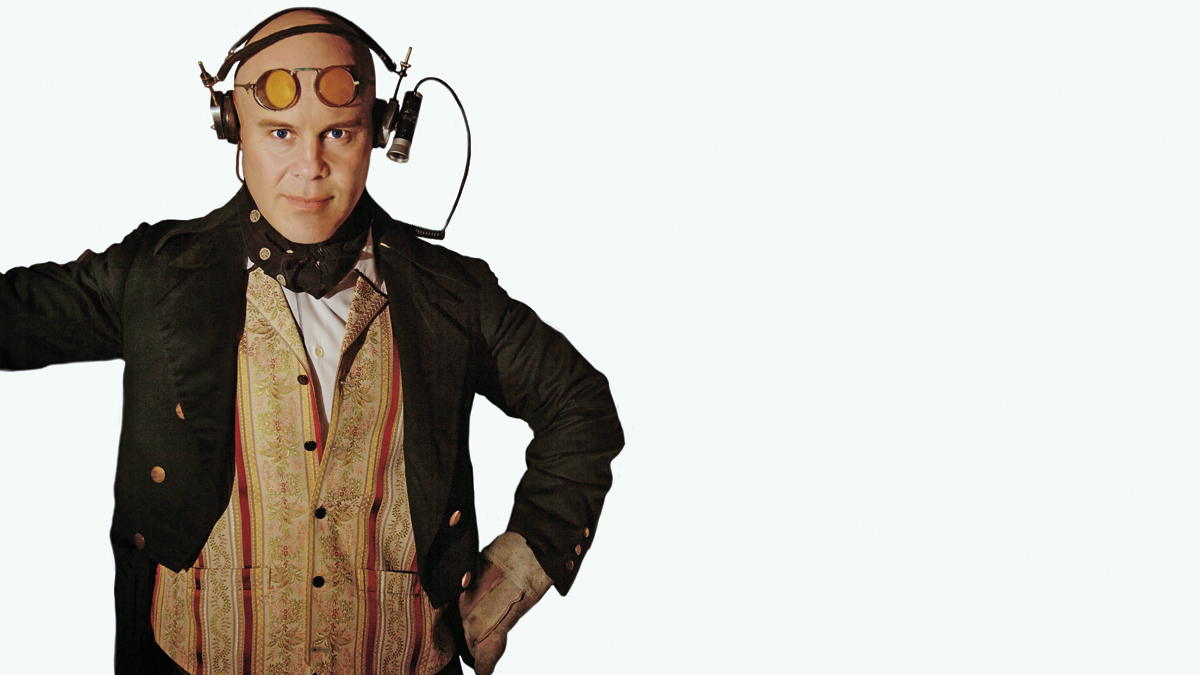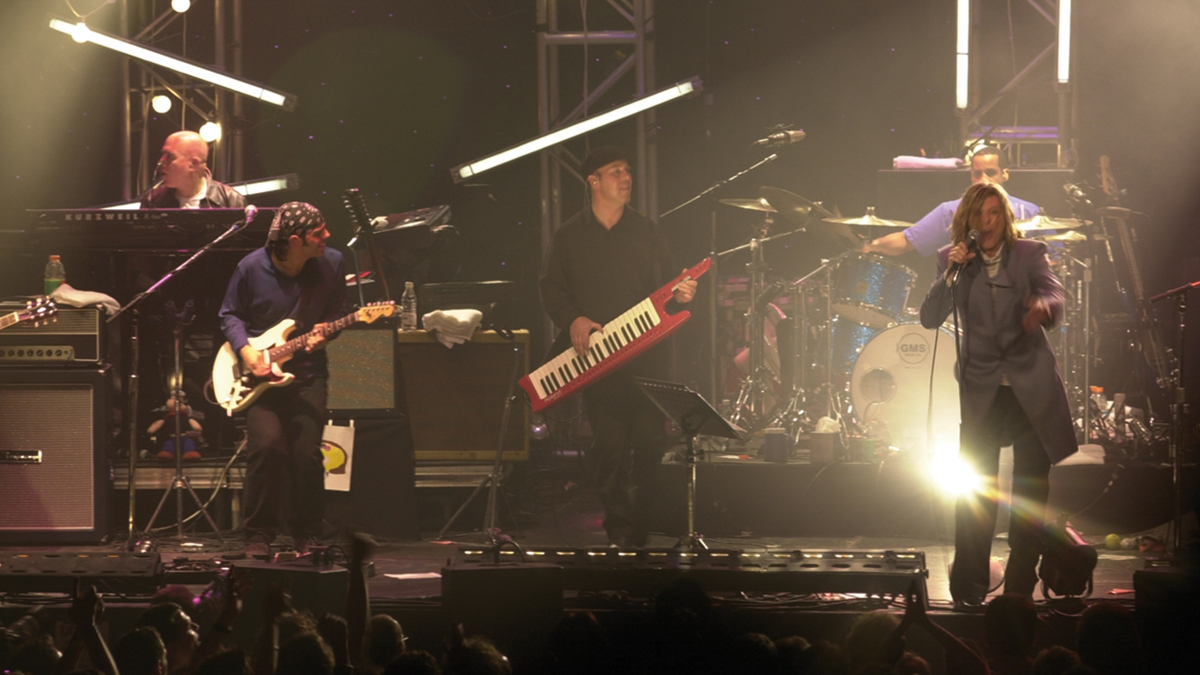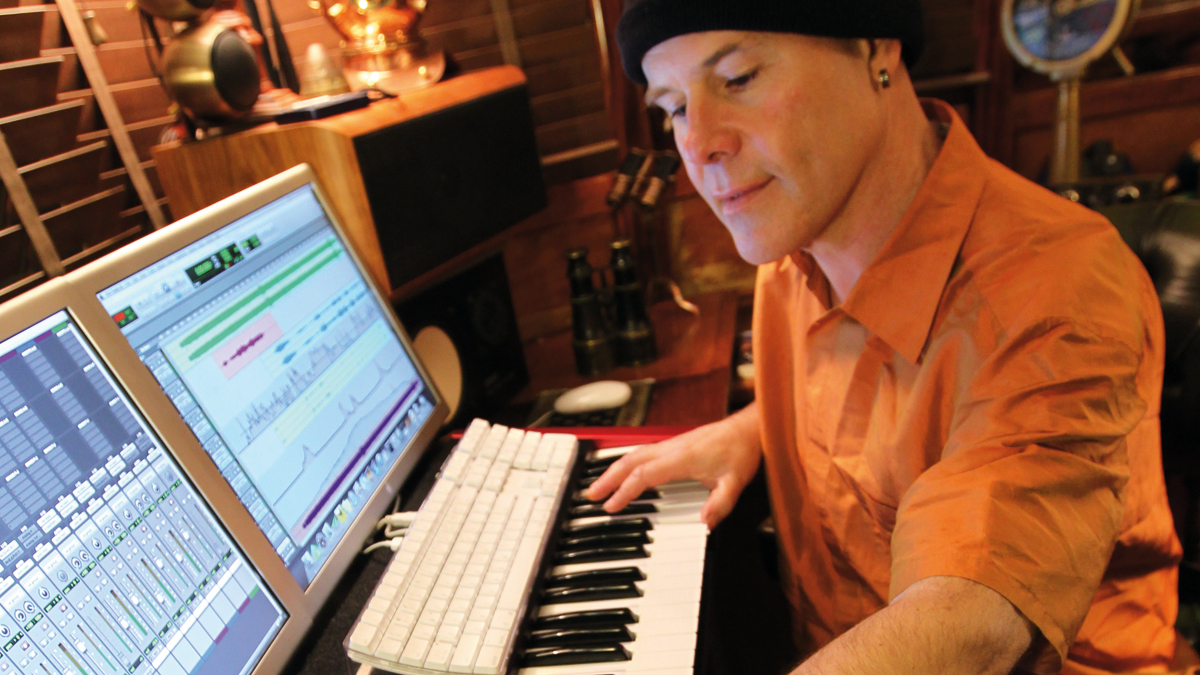Thomas Dolby talks tech, lifeboats and leaving the music business
The artist-turned-innovator remembers the excitement of the digital revolution and wonders where electronic music is heading

It's well over 30 years since Thomas Dolby first charted with the quirk-heavy electro grooves of She Blinded Me with Science and Hyperactive. Although he enjoyed success on both sides of the Atlantic, Dolby soon lost interest in the 'music' business, instead finding himself drawn to the tech revolution in Silicon Valley.
Over the next couple of decades, Dolby became a known and respected dotcom name, helping to develop tools and techniques that would eventually lead music production away from the traditional studio and into the box.
He admits that it made him a wealthy man - at one point, two thirds of the mobile phones being sold around the world were using a software synth that had been developed by his company, Beatnik Inc. Although he could probably have retired to the Californian sunshine, he somehow found himself hankering after his old job.
"I missed making music," says Dolby. "Yes, I had sort of been involved in music technology, but most of my attention was focussed on the business. When it eventually came to setting up a studio around 2005 and immersing myself back in the music-making process, I suddenly found a world that was as thrilling as that internet revolution of the early 90s."
It's no surprise you got involved in the technical side of making music. By all accounts, you were a bit of a geek at school.
"I guess the thing was that I had no fear of music technology. Like most people of my generation, I started off with traditional instruments - guitar and piano - but by the time I heard the likes of Roxy Music and the Berlin albums of Bowie and Eno, I could see that things were shifting.
"Yeah, we'd heard synths in the 60s, but they were usually just there to add a bit of weirdness to a guitar-based rock song. With Bowie and Kraftwerk, electronics were forming the heart of the song. And what was wonderful was that the machines were being allowed to sound like machines - we weren't trying to make them sound human."
Get the MusicRadar Newsletter
Want all the hottest music and gear news, reviews, deals, features and more, direct to your inbox? Sign up here.
How were you sequencing in those early days?
"At first, it was just synths and a two-track tape machine; no sequencing at all. Around the time of the first album [1982's The Golden Age of Wireless], I got a PPG Wave Computer, which allowed you to sequence 16 voices of wavetable synth, plus one of the early PPG drum modules. It was all kinda clunky and crude in a rather engaging way, but I felt like I had the sequencing power of Tangerine Dream.
"During the 80s, the race towards the future just went on and on. Each NAMM show unveiled a machine that literally rewrote the rules, like the Fairlight. I'm not in any way claiming to be a pioneer of electronic music, but I honestly felt like I was making sounds that I'd never heard before... we all were."
Rumour has it that you were a very early Mac convert.
"The Atari was affordable in Britain, but the Macintosh was just as affordable in the US.I spent a lot of time over there, so I was able to get my hands on one. I had a very good working relationship with Opcode and Digidesign in the 80s and was quite heavily involved in their beta programme. That led me to Sound Tools, then Pro Tools, and the realisation that computers and music were, at some point, going to become inseparable.
This is the golden age of the tinkerer, and God knows what sounds we're going to come up with next. There are no rules, anymore... no boundaries."
"Look at where we are today. There are thousands of kids out there who get their first experience of a musical instrument on a laptop; a ridiculously powerful soft synth listened to on a pair of headphones in a coffee shop."
You were relatively successful and yet you decided to walk away from the music business. Why?
"I was fed up of beating my head against a brick wall. I felt neither wanted nor valued, but Silicon Valley made me feel... wanted and valued. Because of my relationship with Opcode and Digidesign, I'd sort of got a foot in the door and found myself being invited to all the new music seminars, talking to people who were putting together multimedia projects, people in the gaming industry. It just seemed a lot more grown up than the music industry.
"The final move away from music came when I started working with David Liddle, who'd been involved with all the innovative mouse/desktop work at Xerox PARC. Paul Allen then set up a company called Interval Research and asked Liddle to assemble a team of researchers like they'd had at Xerox - I was one of those researchers. It was all hush-hush and very well paid, which meant that I could make it my job.
"We're talking early 90s, here. We were sending music over the internet, enabling real- time interaction over the internet; people were jamming over the internet... we created musical interfaces that could be shared over the net.
"This was before the days of having Pro Tools on the network. This was internet music withtraining wheels; we were taking basic computer skills and turning them into musical gestures. It wasn't geared for the professional music market... I think we were looking more towards the games end of the market.
"It was an absolutely thrilling time to be in Silicon Valley. We suddenly became aware that the world wide web was going to change everything. Not only was it going to affect how we made music, which was my sphere of interest, but it was going to change our lives."

Were you already thinking about soft synths? A move away from the traditional synth?
"We were thinking about anything and everything. Look... I'll admit that I was never a programmer. I knew just about enough about programming to be dangerous, but I also knew that I didn't have the patience to be a programmer. What I was good at was breathing heavily down the neck of a programmer, waving carrots and sticks at them.
"With my own company, Beatnik [originally known as Headspace Inc.], we started putting alot of effort into our own music engine, the AVRe - Audio Virtual Reality Engine. It was written in Max and could take control of tempo, key and instrumentation, but it would also allow you to make calls to it from another layer. For example, in a game, you could have variations on the score, depending on what was happening to the player. Any schoolkid who reads this will go, 'So what!', but back then, this was groundbreaking technology.
"Quite a lot of people were excited by this, and Intel invited me to set up an installation at the Guggenheim called the Virtual Reality String Quartet. You wore these virtual reality goggles and found yourself in a room with a string quartet; the key element was that the sound mix altered as you walked around the room.
"If you put your head near the violin, you heard more violin. We even added a tool that allowed you to tickle the players of these virtual instruments; if you tickled the cellist, she stopped playing classical and started playing bluegrass.
That's the crazy thing... we made no money at all. We were barely breaking even. There was so much amazing, innovative work happening back then, but zero revenue."
"That AVRe engine was developed and developed... yes, it eventually developed into a soft synthesiser. We took what we had and rewrote it in WebCode terms. In effect, what we'd got was a language that you could think of as Hyper Music Markup Language - as opposed to Hyper Text Markup Language [HTML] - and we could enable web pages to trigger MIDI and audio in an efficient way over a low bandwidth connection. And we were able to do it very quickly in the web browsers that existed then.
"Later on, we also ratified a file format called RMF [Rich Music Format], which encapsulated MIDI and samples in a single file. We were actually using it for ringtones, breaking down guitar riffs into the smallest files possible. I remember that we managed to get the Smoke on the Water riff down to five basic samples.
"Like I said before, as we sit here today, this all sounds like very basic stuff, but back in the 90s, something like a sonified web page - where you could trigger sounds as you clicked and moved about with the mouse - got a lot of people very excited. We were showing Silicon Valley what the web was going to be like in x years' time, and investors were literally queuing up to give us blank cheques.
"They said, 'Go off and try to sonify the internet. Try to get multimedia companies, ad agencies, global brands and music tech companies interested in the idea of a world wide web with sound. Don't worry if they don't give you any money... we'll keep funding you.'
"We linked up with companies like Yahoo! and Netscape, and made these grand announcements, backed up by impressive press releases. We had T shirts and baseball hats printed. We went to loads of business lunches. We had five incredible years and a lot memorable parties!"
And you made a lot of money! Right...?
"That's the crazy thing... we made no money at all. We were barely breaking even. There was so much amazing, innovative work happening back then, but zero revenue. That's why the dotcom bubble finally burst. And, to be honest, we would have gone the same way as a lot of other companies had we not had secured one deal that had legs.
"Nokia persuaded us to bring our engine into their phones, giving users a massive four voices with a reduced GM set. It was all rather underwhelming, but it worked very well. Of course, there were other software synth developers around like Propellerhead, but they were far more interested in adding more features and getting the most of the rapidly expanding CPU figures. Our synth was all about efficiency... fast downloads, with minimal stress on the system. It was only 50kB, which, as any programmer will tell you, is nothing."
And then you made a lot of money!
"It took a while to get the ball rolling, but, yes, there came a point where Beatnik became a viable company. Nokia exploded and other companies wanted to use our software; at one point, two thirds of the phones being sold contained Beatnik software.
"OK... we made a lot of money, but, as you can imagine, it suddenly became all about the numbers, and I wasn't very interested in that. It wasn't exactly creative. What could I do that was creative? Ironically, I was back to music again!"

Had you kept all the old gear?
"Nah, I'm not one of those analogue fetishists. Most of it had been lost or sold. And, to be honest, I didn't need it. If I wanted an ARP 2600 - a synth that I never owned - I could get a software version for a few quid and it sounded more or less like the real thing.
"Because of my Mac history, I've ended up using Logic. Opcode went away, Studio Vision went away, and I shifted over to Logic after Apple bought Emagic. Those early days were... yeah, it was obviously a very powerful program, but the way you used Logic kind of annoyed me. I had to stick with it, though, because it was obvious that Logic was going to lead the way. It's definitely been the right choice."
Do you currently have a 'studio'?
"Yes, it's built in an old lifeboat that sits at the bottom of the garden in my house on the East Anglia coast. It's powered solely by a bank of batteries that are charged via a wind turbine and solar panels. It's not exactly Abbey Road, but I love it.
"Making music isn't my only job, though. I still spend a lot of time in the States and, last year, I was offered a teaching post at Johns Hopkins University in Baltimore. I'm actually a Professor of the Arts. [Laughs] Professor Dolby!
"As people probably know, Baltimore has been in the wars. In the aftermath of that, there's been a lot of interest in turning things around; reviving certain areas of the city. Johns Hopkins have invested heavily in an old Art Deco cinema in an area of the city called Station North, and we're hoping to build a sound stage, a recording studio and a screening theatre... one of my jobs is to get the local community involved. Give kids a chance to make music or make a film. I know it sounds like a bit of a cliché, but music and the arts can really help to heal a city."
After you moved in the box, did you find you were writing songs in a totally different way to the days of Hyperactive?
"Yes... and no. I think I've always been someone who writes songs in a very traditional way. Intro, verse, chorus, middle-eight, ending etc. As electronic music developed, there was obviously a move away from that; it was all about a great loop or an interesting bassline.
"When I came back to music, I wasn't quite sure what my music was going to sound like, but I thought, 'Well, not many people seem to be doing intro-verse-chorus-middle-eight. Maybe if I do that, my music will stand out.' I released an album in 2011 called A Map of the Floating City, and we just about broke even with that, which, in an age when record sales are going down the tubes, wasn't too bad.
"But it was in the process of making that album, I realised just how much the process of songwriting had changed. Even for someone like me who was regarded as an 'electronic' musician, the 80s were still about studio time. And studio time costs money. Writing songs in the studio and working on ideas could literally set you back thousands of pounds. But, locked away on my little lifeboat, I could spend as long as I wanted messing around on ideas without worrying what it was going to cost. I found that songs were coming out of... accidents. I could spend all day hooking up this plugin to this plugin and just seeing what happened.
"If you look back at the development of electronic music over the last 20 years, it seemslike so much of it came out of accidents; trial and error. Drum 'n' bass, dubstep and a lot of EDM stuff. It exists because people suddenly had the opportunity to dig right into the innards of their equipment and tinker.
"This is the golden age of the tinkerer, and God knows what sounds we're going to come up with next. There are no rules, anymore... no boundaries."

Thomas Dolby's The Sole Inhabitant is being re-released as a double vinyl set. Look out for his book, The Speed of Sound, next year on Invisible Hands Music.


Computer Music magazine is the world’s best selling publication dedicated solely to making great music with your Mac or PC computer. Each issue it brings its lucky readers the best in cutting-edge tutorials, need-to-know, expert software reviews and even all the tools you actually need to make great music today, courtesy of our legendary CM Plugin Suite.










